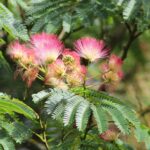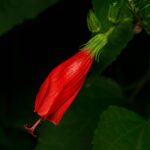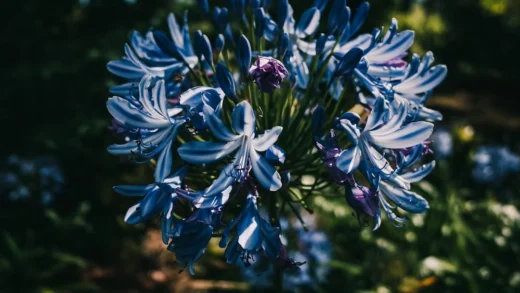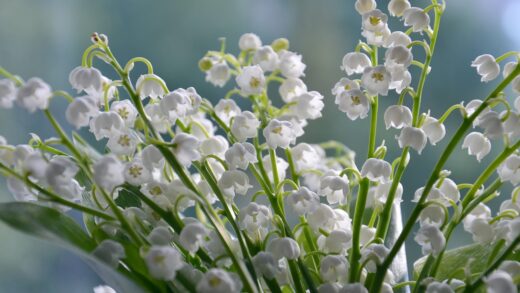Understanding and providing the correct light conditions for azaleas is one of the most fundamental aspects of their successful cultivation. These plants have evolved as woodland understory shrubs, a background that has finely tuned their preferences for a specific quality and duration of light. Unlike sun-loving perennials that thrive in open, bright conditions, azaleas flourish in the gentle, filtered light found beneath the canopy of taller trees. Getting the light right is not just about survival; it directly influences the plant’s overall health, the density of its foliage, and, most importantly, the abundance and quality of its cherished blooms. Placing an azalea in the wrong light exposure is a common mistake that can lead to a host of problems, from scorched leaves to sparse flowering.
The ideal light for the vast majority of azalea varieties is often described as “dappled shade” or “partial shade.” This means the plant receives a few hours of direct morning sun, followed by protection from the intense, harsh rays of the afternoon sun. The gentle morning sun provides enough energy for robust photosynthesis and flower bud development without causing the stress and damage associated with prolonged, direct exposure. An environment that offers bright, indirect light for most of the day is also highly suitable. Think of the patterns of light and shadow on a forest floor; this is the environment you are trying to replicate in your garden.
The consequences of providing too much direct sun are significant and easily observable. The leaves of an azalea exposed to excessive sunlight will often become pale, yellow, or “bleached” in appearance. In more severe cases, the foliage will develop brown, scorched patches, and the edges of the leaves may become dry and crispy. The plant as a whole may appear stressed, wilted, and stunted. While it might still produce some flowers, the bloom period will often be shorter as the intense sun and heat cause the delicate blossoms to fade and wilt prematurely.
Conversely, while azaleas are shade-tolerant, too little light can also be problematic, primarily affecting their ability to flower. A plant situated in deep, dense shade may produce lush, dark green foliage but will have very few, if any, blooms. This is because the plant is not receiving enough light energy to initiate the formation of flower buds for the following season. The growth habit might also become “leggy” or sparse as the branches stretch out in an attempt to find more light. The key is to find the perfect balance between the two extremes.
The ideal location and exposure
The perfect planting location for an azalea leverages the natural light patterns of your landscape. The most coveted spot is one that receives two to four hours of direct, gentle sunlight in the morning. An eastern exposure, such as the east-facing side of a house or a wall, is often perfect. In this location, the plant can soak up the beneficial morning rays but is then shielded from the much stronger and hotter sun of the afternoon. A northern exposure can also be very successful, as it typically provides bright, indirect light for most of the day without any prolonged periods of direct sun.
More articles on this topic
Planting under the canopy of tall trees is another excellent strategy for creating the ideal lighting conditions. High-branched, deep-rooted trees like pines and oaks are particularly good companions for azaleas. Their lofty canopies filter the sunlight, creating the dappled shade effect that azaleas love, while their deep root systems are less likely to compete directly with the shallow roots of the azalea for water and nutrients. Avoid planting under shallow-rooted trees like maples, which create dense shade and aggressive surface roots.
It is crucial to avoid western and southern exposures unless there is a significant source of shade, such as a large tree or structure, to block the afternoon sun. In these locations, the sun is at its most intense, and the heat can be punishing, especially during the summer months. An azalea planted in such a spot will be under constant stress, require more frequent watering, and is highly susceptible to leaf scorch. If such a location is your only option, you must be prepared to provide some form of artificial shading, especially during the plant’s initial establishment period.
When planning your garden, it is also important to consider how light conditions may change over time. A spot that is perfect for a young azalea today might become too shady in a few years as nearby trees and shrubs mature and fill out. Conversely, the removal of a large tree can suddenly expose a shade-loving azalea to full sun, causing severe stress. A long-term perspective on the evolution of your garden’s light patterns will help you make the best initial siting decisions for these long-lived shrubs.
Light’s effect on flowering and foliage
The quantity and quality of light an azalea receives have a direct and profound impact on its flowering performance. Flower bud formation for the following spring is initiated during the summer months, and this process is highly dependent on the plant receiving sufficient light energy. An azalea that gets an adequate amount of filtered sunlight or morning sun will produce a large number of healthy flower buds, resulting in a dense and spectacular bloom display. The colors of the flowers will also be richer and more vibrant when the plant is grown in optimal light.
More articles on this topic
If an azalea is planted in too much shade, its flowering will be significantly compromised. The plant may appear healthy, with deep green leaves, but it will produce very few flowers, or in some cases, none at all. The blooms that do appear may be smaller and less intensely colored. This is a common frustration for many gardeners who see a healthy-looking plant that refuses to bloom. In nine out of ten cases, the culprit is insufficient light exposure. Moving the plant to a location with more morning sun will often resolve the issue within a season or two.
Conversely, too much sun negatively affects the quality and longevity of the flowers. While a plant in a very bright location might set a large number of buds, the flowers themselves will not last as long. The intense sun and heat can cause the delicate petals to fade, scorch, and wilt much more quickly than those on a plant in a more protected location. Therefore, the most impressive and longest-lasting floral displays are always found on azaleas that are sited in that ideal balance of morning sun and afternoon shade.
The appearance of the foliage is also a clear indicator of whether the light conditions are correct. In ideal light, an evergreen azalea will have leaves of a rich, healthy green color appropriate for its variety. Too much sun will cause the leaves to turn a pale, washed-out green or even yellow, a condition known as photo-oxidation. In deep shade, the leaves may become a very dark green and may be larger and thinner than normal as the plant tries to maximize its light-capturing surface area. Observing the color and condition of the foliage is an excellent way to diagnose lighting issues.
Deciduous vs. evergreen azaleas
While the general preference for dappled shade holds true for most azaleas, there can be some subtle differences in light tolerance between deciduous and evergreen types. Deciduous azaleas, which are those that lose their leaves in the winter, often exhibit a slightly higher tolerance for direct sun than their evergreen counterparts. Many native azalea species are deciduous and can be found growing in more open woodland settings or along the edge of forests where they receive more light.
This increased sun tolerance means that you may be able to successfully grow a deciduous azalea in a location that receives a bit more sun, perhaps extending into the late morning or even early afternoon, especially in cooler climates. However, even these more sun-tolerant varieties will still perform best with some protection from the hottest part of the day. A location with full morning sun and then light shade in the afternoon is often perfect for maximizing the flowering potential of many deciduous cultivars without causing significant stress to the plant.
Evergreen azaleas, on the other hand, are generally more sensitive to direct sun. Their leaves persist through the winter, making them vulnerable to winter sunscald and desiccation, which is exacerbated by a sunny, exposed location. For these types, providing shelter from the afternoon sun is not just beneficial, it is often essential for their long-term health and appearance. The ideal site for an evergreen azalea is almost always one that provides consistent dappled shade or a clear morning-sun-afternoon-shade pattern.
When selecting an azalea for a particular spot in your garden, it is helpful to research the specific light recommendations for that cultivar. Breeders have developed hundreds of different varieties, and while the general rules apply, some may be bred for slightly more sun or shade tolerance than others. Reading the plant tag or consulting a reliable nursery can provide valuable information on the specific needs of the variety you are considering, allowing you to make a more informed and successful choice.
Adjusting light conditions
If you find that an existing azalea is in a location with improper lighting, you have a couple of options to remedy the situation. The most effective, though also most labor-intensive, solution is to transplant the shrub to a more suitable location. The best time to move an azalea is in the early spring before new growth begins, or in the early autumn after the heat of summer has passed. This gives the plant time to re-establish its root system before facing the stress of summer heat or winter cold.
If moving the plant is not feasible, you may be able to modify the light conditions in its current location. If the issue is too much sun, you could consider planting a taller, open-canopied tree nearby to provide future shade. In the short term, you could erect a temporary shade structure using shade cloth during the hottest, sunniest months of the year. While not the most aesthetically pleasing solution, it can protect a plant from severe stress.
If the problem is too much shade from overhanging trees, selective pruning of the tree’s canopy may be the solution. This process, known as “limbing up” or “thinning,” involves removing some of the lower branches or selectively thinning out the upper canopy of the tree. This allows more filtered sunlight to reach the ground below without removing the tree entirely. This is often a job best left to a professional arborist, who can safely prune the tree in a way that benefits both the tree’s health and the plants growing beneath it.
Before taking any drastic measures, it is important to observe the light patterns in your garden throughout an entire day and across different seasons. The position of the sun in the sky changes dramatically from summer to winter, and the presence or absence of leaves on deciduous trees can completely alter the light conditions in a particular spot. A location that seems shady in June might be quite sunny in March before the trees leaf out. A thorough understanding of your garden’s specific light dynamics is the first step in making any necessary adjustments for the benefit of your azaleas.


















